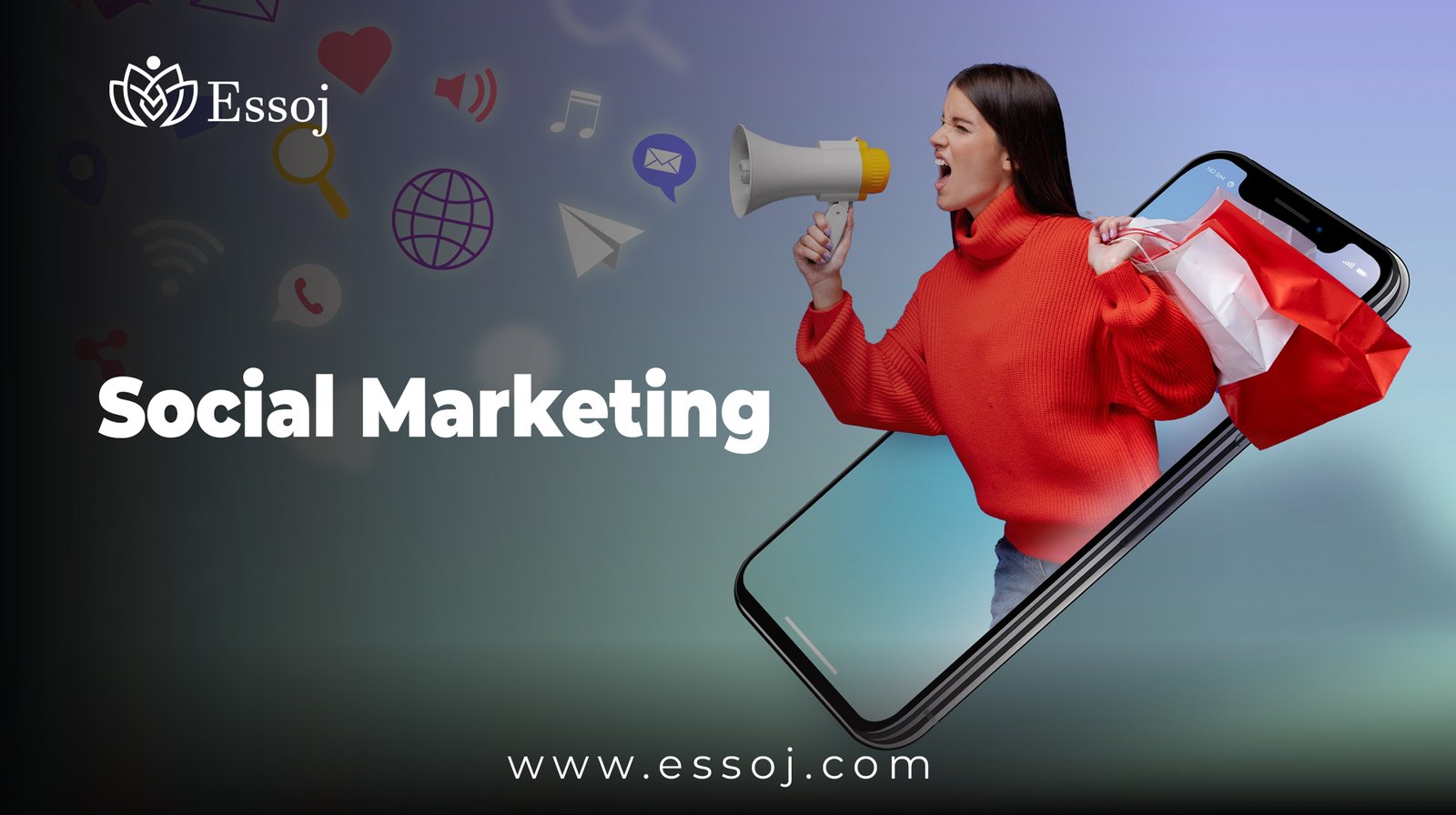In today’s world, where digital connections are just a click away, social marketing has become a crucial tool for businesses and organizations. It goes beyond traditional marketing, providing a platform to promote meaningful, positive change in society. But what exactly is social marketing, and how can it benefit your brand? This article will explore the nuances of social marketing, explain its importance, and provide practical steps to implement successful campaigns.
What is Social Marketing?
Social marketing is the use of marketing principles and strategies to promote behaviors that benefit individuals and society as a whole. Unlike traditional marketing, which focuses on selling products or services, social marketing aims to influence positive behavior change. It encourages people to adopt healthier lifestyles, support community programs, engage in environmental conservation efforts, and participate in social justice initiatives.
For example, campaigns that promote smoking cessation, encourage safe driving practices, or advocate for recycling are prime examples of social marketing. These initiatives use marketing techniques to drive meaningful changes in society, rather than simply generating profit. Ultimately, social marketing is about using marketing tools to address social challenges and foster lasting, positive impact.
The Importance of Social Marketing
Understanding the significance of social marketing can help you appreciate its crucial role in modern marketing strategies. Here are a few reasons why social marketing is essential:
1. Behavioral Change
At the heart of social marketing is the goal to promote positive behavioral change. Through targeted campaigns, organizations can influence people’s actions in ways that benefit society. Whether it’s encouraging healthier habits, reducing environmental harm, or supporting social causes, social marketing plays a vital role in improving public health and well-being.
For instance, anti-smoking campaigns have successfully reduced smoking rates worldwide, saving lives and reducing healthcare costs. Similarly, initiatives promoting sustainable living and eco-friendly practices help combat climate change and preserve natural resources.
2. Community Engagement
Social marketing also fosters community engagement. Many campaigns invite people to actively participate in a cause, which helps build stronger relationships between brands and their audiences. By involving people in the solution, social marketing empowers them to take ownership of the issue and motivates them to contribute to change.
Successful community involvement can lead to higher levels of trust, loyalty, and support, as people feel personally invested in the cause. This connection can be mutually beneficial, strengthening both the social movement and the brand’s reputation.
3. Brand Awareness and Loyalty
When businesses engage in social marketing, they not only contribute to a positive cause but also enhance their brand’s image. Today’s consumers are increasingly looking for brands that reflect their values. By supporting social causes, companies can build brand loyalty and strengthen customer relationships.
For example, brands like Patagonia and Ben & Jerry’s have cultivated strong brand loyalty by championing environmental and social justice causes. This not only builds goodwill but also attracts customers who resonate with the brand’s mission.
4. Cost-Effective Promotion
Compared to traditional advertising, social marketing can be more cost-effective. By leveraging digital platforms and grassroots efforts, organizations can reach a vast audience without spending large sums on traditional media like TV or print ads. Social media, blogs, and community events can all be used to engage audiences and raise awareness while keeping costs low.
In fact, many successful social marketing campaigns have gone viral without the need for expensive ad buys. The Ice Bucket Challenge, for instance, became a global sensation with minimal financial investment, demonstrating the potential power of organic engagement.
A Step-by-Step Guide to Using Successful Social Marketing
Creating an impactful social marketing campaign involves careful planning and execution. Below is a step-by-step guide to help you get started:
Step 1: Identify Your Goals
Begin by defining what you want to achieve with your campaign. Are you aiming to raise awareness about a health issue, encourage community participation, or promote environmental sustainability? Clear objectives will guide your campaign’s messaging, strategy, and metrics for success.
Step 2: Understand Your Target Audience
To be effective, you need to understand who you’re trying to reach. Conduct research to learn about your audience’s demographics, interests, and behaviors. Tools like Google Analytics and Facebook Audience Insights can provide valuable data on your audience’s habits, allowing you to tailor your message accordingly.
By knowing your audience, you can ensure that your campaign speaks directly to their values and challenges. For example, a campaign promoting healthy eating may focus on different messaging for young adults compared to seniors, tailoring the benefits to each group’s lifestyle.
Step 3: Craft Your Message
Your message should align with your campaign goals and resonate with your audience. Keep it clear, concise, and emotionally compelling. Use storytelling to make the message more relatable and personal.
For instance, a campaign promoting mental health awareness might share the story of someone who overcame anxiety through therapy or self-care. A relatable anecdote can humanize the cause, making it more approachable and motivating people to take action.
Step 4: Choose the Right Channels
Selecting the right channels is crucial for reaching your audience. Depending on your target demographic, you may choose social media platforms, email newsletters, blogs, podcasts, or community events. Each platform has unique strengths:
- Instagram: Ideal for visually-driven campaigns.
- Twitter: Great for real-time discussions and news sharing.
- Facebook: Good for building community groups and fostering long-term engagement.
Consider your audience’s preferred communication channels and tailor your strategy accordingly.
Step 5: Create Engaging Content
Content is the heart of social marketing. Develop diverse types of content, including videos, infographics, articles, and social media posts. Make your content visually appealing, easy to consume, and shareable. Use compelling headlines and eye-catching graphics to grab attention.
For example, a campaign promoting clean water might feature a series of before-and-after images showing the impact of pollution, or a video highlighting community efforts to improve water access. Using multimedia content helps tell a more engaging and impactful story.
Step 6: Engage with Your Audience
Interaction is key in social marketing. Encourage your audience to engage with your campaign by sharing their stories, participating in challenges, or taking action on the issue. Respond to comments, messages, and feedback promptly to create a sense of community and involvement.
In the context of a mental health campaign, you might ask followers to share their self-care routines or coping strategies, creating a supportive environment where people feel comfortable participating.
Step 7: Monitor and Evaluate Your Campaign
Once your campaign is live, it’s essential to monitor its performance. Use tools like Google Analytics, Hootsuite, or Sprout Social to track engagement, reach, and conversion rates. Monitoring helps you understand how well your message is resonating and what actions people are taking as a result.
Evaluate the effectiveness of your campaign by looking at key performance indicators (KPIs), such as the number of shares, comments, and donations (if applicable). This data will help you refine your strategy for future campaigns.
Step 8: Adjust and Improve
Based on your evaluation, make adjustments to your strategy as needed. Social marketing is dynamic, and audience preferences can change over time. Keep evolving your approach to stay relevant and effective in addressing new challenges or emerging trends.
Real-Life Examples of Successful Social Marketing Campaigns
To better understand social marketing, let’s look at a couple of campaigns that had a significant impact:
Example 1: The Ice Bucket Challenge
In 2014, the Ice Bucket Challenge went viral, raising awareness and funds for ALS (Amyotrophic Lateral Sclerosis) research. The campaign encouraged participants to pour ice water over themselves, donate to ALS research, and challenge friends to do the same. This initiative raised over $115 million for the cause and educated millions of people about ALS.
The campaign leveraged social media’s viral nature to spread its message, creating a massive social movement that transcended geographical and cultural boundaries.
Example 2: Dove’s Real Beauty Campaign
Dove’s Real Beauty Campaign aimed to challenge beauty standards and promote body positivity. Through various marketing strategies, Dove encouraged women to embrace their natural beauty, showcasing diverse models of all sizes, shapes, and ages.
This campaign resonated with many and successfully enhanced Dove’s brand loyalty while also fostering a positive social message. By focusing on authenticity and self-acceptance, Dove created a meaningful conversation around beauty and body image.
Some Advice for Effective Social Marketing
- Be Authentic: Ensure your message aligns with your brand’s values. Authenticity builds trust and credibility.
- Stay Relevant: Keep your campaigns timely by following current events and trends.
- Collaborate: Partnering with other organizations or influencers can expand your reach and amplify your message.
- Use Data Wisely: Leverage data and analytics to guide your strategy and measure success.
FAQs About Social Marketing:
- What is social marketing?
Social marketing uses marketing strategies to promote social good, such as encouraging healthier behaviors or raising awareness about important issues. - What skills are needed for social marketing roles?
Key skills include content creation, social media strategy, data analysis, and strong communication skills. - How can I get started in social marketing?
Start by gaining experience through internships or projects, familiarizing yourself with digital tools, and following trends in social causes. - Is social marketing a growing career field?
Yes, as more companies and organizations recognize the value of social marketing, this field is rapidly growing.
Conclusion
Social marketing has the power to create positive change while simultaneously enhancing brand awareness and loyalty. By following the steps outlined in this guide, you can create impactful social marketing campaigns that resonate with your audience and contribute to societal well-being.
If you’re passionate about making a difference, social marketing offers the tools and strategies to do so. By carefully crafting your message, engaging with your audience, and measuring your success, you can play a key role in creating a better, more connected world.

